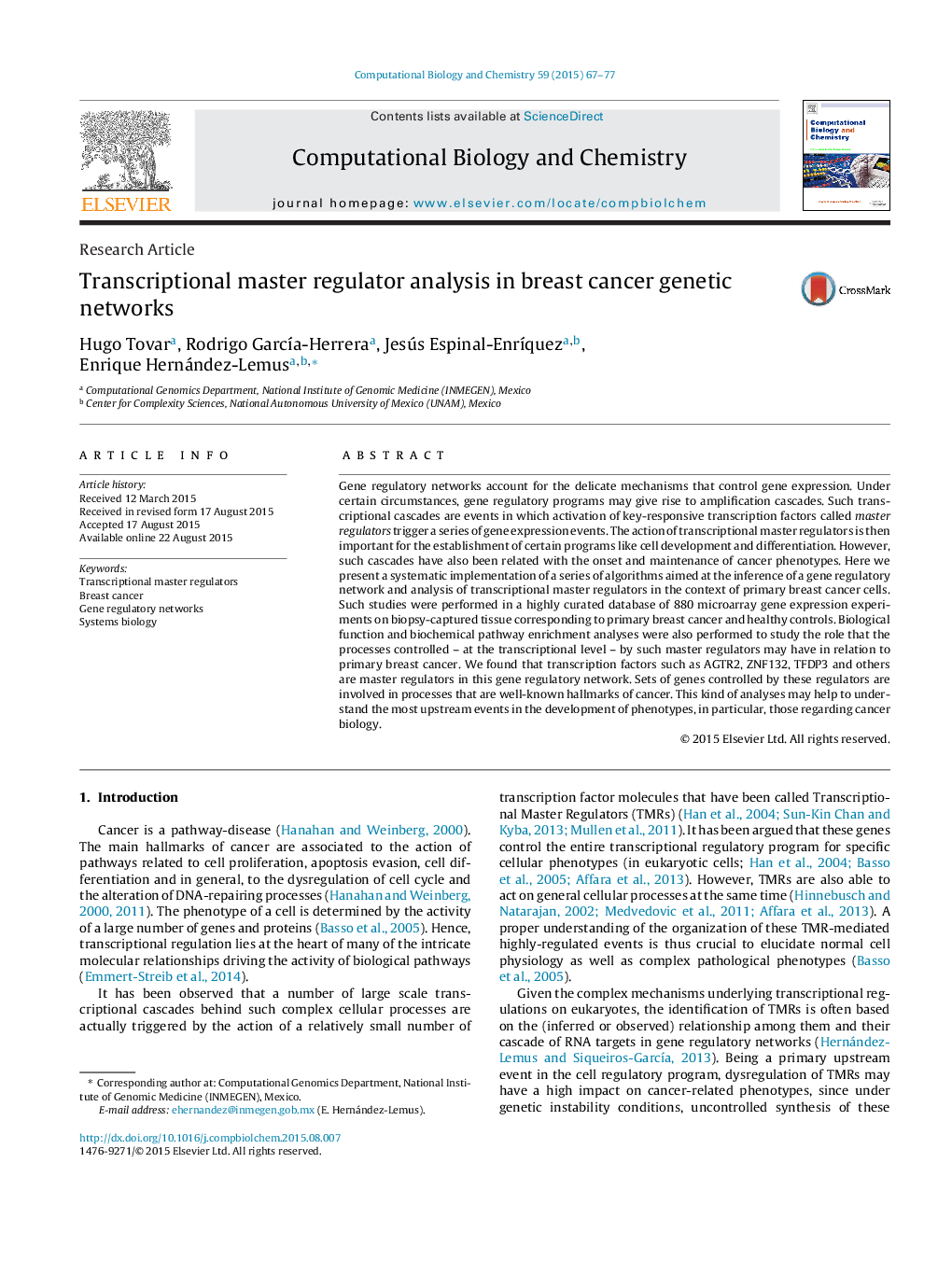| Article ID | Journal | Published Year | Pages | File Type |
|---|---|---|---|---|
| 15032 | Computational Biology and Chemistry | 2015 | 11 Pages |
Gene regulatory networks account for the delicate mechanisms that control gene expression. Under certain circumstances, gene regulatory programs may give rise to amplification cascades. Such transcriptional cascades are events in which activation of key-responsive transcription factors called master regulators trigger a series of gene expression events. The action of transcriptional master regulators is then important for the establishment of certain programs like cell development and differentiation. However, such cascades have also been related with the onset and maintenance of cancer phenotypes. Here we present a systematic implementation of a series of algorithms aimed at the inference of a gene regulatory network and analysis of transcriptional master regulators in the context of primary breast cancer cells. Such studies were performed in a highly curated database of 880 microarray gene expression experiments on biopsy-captured tissue corresponding to primary breast cancer and healthy controls. Biological function and biochemical pathway enrichment analyses were also performed to study the role that the processes controlled – at the transcriptional level – by such master regulators may have in relation to primary breast cancer. We found that transcription factors such as AGTR2, ZNF132, TFDP3 and others are master regulators in this gene regulatory network. Sets of genes controlled by these regulators are involved in processes that are well-known hallmarks of cancer. This kind of analyses may help to understand the most upstream events in the development of phenotypes, in particular, those regarding cancer biology.
Graphical abstractFigure optionsDownload full-size imageDownload as PowerPoint slide
